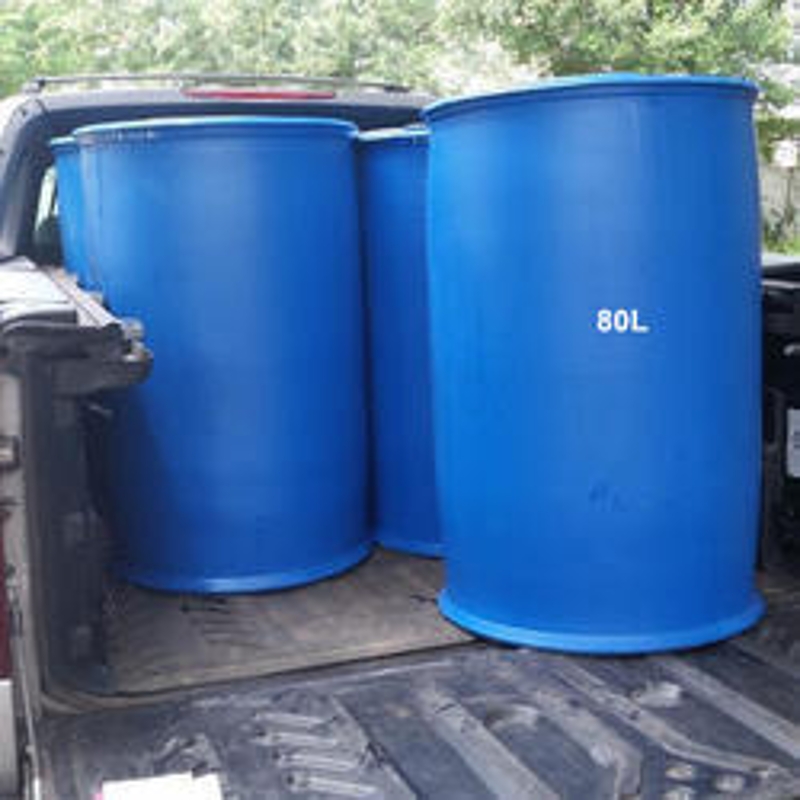-
Categories
-
Pharmaceutical Intermediates
-
Active Pharmaceutical Ingredients
-
Food Additives
- Industrial Coatings
- Agrochemicals
- Dyes and Pigments
- Surfactant
- Flavors and Fragrances
- Chemical Reagents
- Catalyst and Auxiliary
- Natural Products
- Inorganic Chemistry
-
Organic Chemistry
-
Biochemical Engineering
- Analytical Chemistry
-
Cosmetic Ingredient
- Water Treatment Chemical
-
Pharmaceutical Intermediates
Promotion
ECHEMI Mall
Wholesale
Weekly Price
Exhibition
News
-
Trade Service
In mid-November, the autumn grain harvest in the agricultural province of Heilongjiang was fully successful, and farmers were still busy in the fields after the pellets were returned to the warehouse – the battle for efficient use of straw was still in full
swing.
After the autumn harvest in previous years, straw handling has always been a social problem, except for some that are pulled home for fuel or fodder, most of the straw is left in the field to be burned
before the following spring plowing.
Once upon a time, when straw was burned, the smell of smoke was choking, and straw was therefore considered an environmental burden
.
Today, the high-value utilization of straw has a new destination - it is processed into cellulosic ethanol
.
In Hailun City, Heilongjiang Province, SDIC Advanced Biomass Fuel (Hailun) Co.
, Ltd.
has now completed the packaging of 40,000 tons, equivalent to 110,000 mu of straw, through the signing of purchase agreements with surrounding suppliers and farmers
.
These straws will be processed into cellulosic ethanol
.
After this transformation, straw, a "misplaced resource", can be transformed from an environmental burden to green energy, contributing to China's goal of carbon peak and carbon neutrality
.
A new breakthrough in advanced bio-liquid fuels
Cellulosic ethanol is a typical advanced biological liquid fuel, which uses straw and other agricultural and forestry wastes as raw materials, and has typical green and low-carbon renewable characteristics
.
In April 2022, the national cellulosic ethanol industrialization demonstration project - SDIC Advanced Biomass Fuel (Hailun) Co.
, Ltd.
with an annual output of 30,000 tons of cellulosic ethanol industrialization demonstration project was successfully completed
.
The project has been supported by the National Development and Reform Commission and the National Key R&D Program, and has been approved as a demonstration application project
of "the first (set) major technical equipment in the energy field" by the National Energy Administration.
The completion of this project means that the industrialization of national advanced bio-liquid fuel has achieved a new breakthrough
.
"After the straw is transported to our factory, cellulose, hemicellulose and lignin are separated by pretreatment, and then high-efficiency cellulase is added to convert cellulose and hemicellulose into fermentable sugar, which is converted into ethanol after fermentation, and then distilled to obtain cellulosic ethanol, and 5 tons of straw can produce 1 ton of ethanol
.
" The staff introduced
to the author.
From the perspective of raw material abundance, as a large agricultural country, China is rich in straw resources, and the amount of collectible resources accounts for a relatively high proportion, and the straw output has been stable at 800 million tons per year
in the past 10 years.
In 2021, the country's straw production was 865 million tons
.
It is estimated that the average annual amount of straw available in the country exceeds 100 million tons, which can produce about 20 million tons of cellulosic ethanol
.
At present, the national gasoline consumption is 150 million tons / year, such as according to the current standard blending ratio of 10% ethanol gasoline for vehicles, the annual utilization of cellulosic ethanol 15 million tons
.
From the perspective of independent innovation of technology, after years of technical research, the SDIC biological project team has made breakthroughs in the whole process from raw material collection, storage and transportation to pretreatment, efficient enzymatic hydrolysis, fermentation and transformation, purification and refining and comprehensive utilization, forming a complete set of cellulosic ethanol industrialization technology with independent intellectual property rights, reaching the international advanced level in terms of process indicators, series of equipment, intelligent control, total energy output efficiency, capacity investment, etc.
, and also cultivating and reserve a large number of professional and
。 Cellulosic ethanol has the technical conditions
for rapid expansion.
In recent years, many countries and regions have actively promoted the innovation and industrialization demonstration
of cellulosic ethanol.
Especially in the United States and Europe, a lot of resources have been invested in cellulosic ethanol, with more than 100 pilot and demonstration projects
.
Among them, there are many projects
invested by oil and gas giants such as Shell, BP, Clariant, and POET in the United States or bioenergy companies.
From a worldwide perspective, the vitamin ethanol industry is about to enter the stage of commercial operation, and no country has formed an insurmountable competitive advantage, and China has the conditions for large-scale development of cellulosic ethanol in terms of raw material security, industrial foundation, economy, market space, etc.
, and the strategic opportunity is greater
.
Zero-carbon industries help rural revitalization
Plants use photosynthesis to convert carbon dioxide into organic carbon and oxygen, and organic carbon is further converted into energy and industrial chemicals, which can achieve zero or even negative carbon emissions, and the production of cellulosic ethanol is a zero-carbon industry
.
The replacement of ordinary gasoline with cellulosic ethanol can produce significant emission reduction effects, and the production and promotion of the use of cellulosic ethanol can make great contributions
to the emission reduction of China's transportation industry.
According to the calculation of Beijing Zhongchuang Carbon Investment Technology Co.
, Ltd.
, compared with ordinary gasoline, each ton of cellulosic ethanol can reduce 3.
47 tons of carbon dioxide equivalent, and the carbon emission reduction rate reaches 151%, which has a significant carbon negative effect
.
In addition to 5 tons of straw to produce 1 ton of cellulosic ethanol, there are nearly 2.
9 tons of lignin-rich residues, which are converted into electricity and steam through biomass power plants, which meet self-consumption needs and can also output 3.
8 tons of steam
.
Using crop straw as raw material to produce cellulosic ethanol will not "compete with people for food", but can also improve farmers' enthusiasm and income from growing grain, thereby ensuring food security
.
Taking the purchase of corn stover in Northeast China as an example, 1 ton of cellulosic ethanol consumes 5 tons of straw, and each ton of straw in the collection, storage and transportation process can increase farmers' income by 300 yuan
.
If the industry forms a scale, the production of 15 million tons of cellulosic ethanol a year can increase farmers' income by more than
20 billion yuan.
At the same time, in accordance with the principle of close to the origin of raw materials, cellulosic ethanol projects are mostly built in agricultural areas, becoming local agricultural industrialization leading enterprises, stimulating the regional economy, expanding employment and helping rural revitalization
.
"The straw harvested by our Helun cellulosic ethanol industrialization demonstration project this year is expected to increase the income of surrounding farmers by more than 10 million yuan
.
" An employee of SDIC Bio Helen told the author
.







